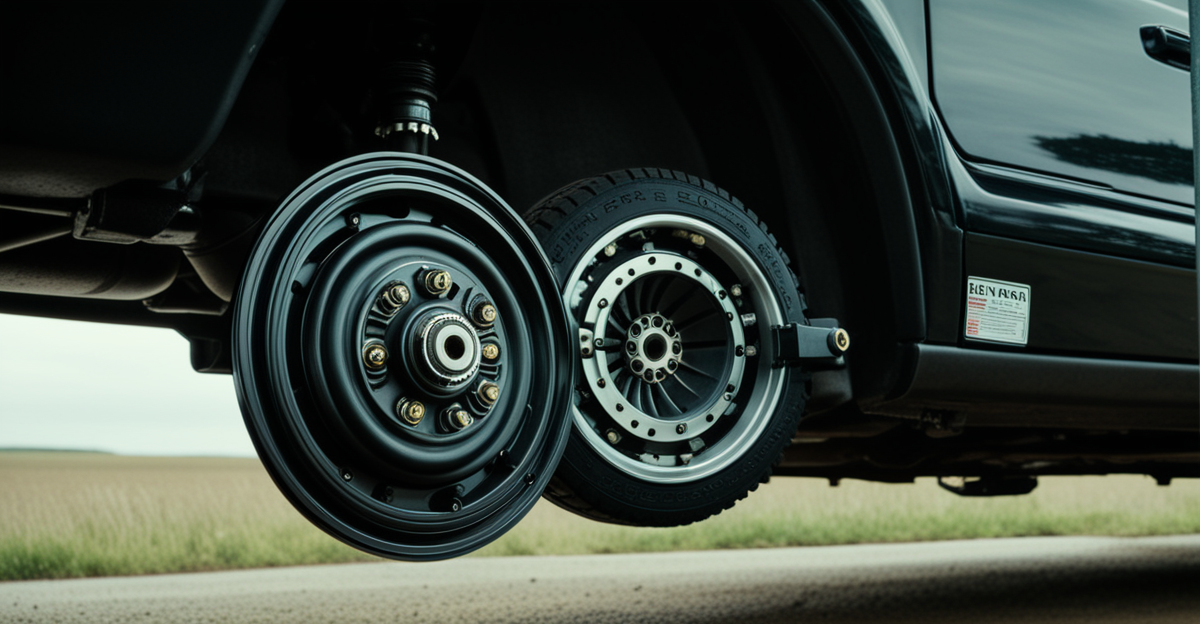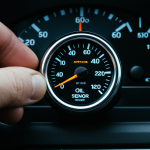Understanding Hydraulic Clutch Systems
The hydraulic clutch system basics hinge on converting the driver’s foot pressure on the clutch pedal into hydraulic pressure, effectively controlling the clutch engagement. Unlike a cable-operated clutch, hydraulic systems use fluid to transmit this force, offering smoother operation and consistent pedal feel.
At the core of the hydraulic clutch function are three key components: the clutch master cylinder, the clutch slave cylinder, and the hydraulic fluid reservoir. When the clutch pedal is pressed, the master cylinder pushes hydraulic fluid through a line to the slave cylinder, which then actuates the clutch fork to disengage the clutch. This fluid movement directly impacts the vehicle’s ability to smoothly shift gears, minimizing wear and tear on the transmission.
Also to discover : Comprehensive Guide to Diagnosing and Sustaining Your Vehicle’s Oil Pressure Sensor for Top Efficiency
Understanding the role of the hydraulic clutch in vehicle performance is crucial for appreciating why regular car clutch maintenance is important. A properly functioning hydraulic clutch system ensures precise control over gear changes, enhances driving comfort, and reduces the risk of clutch slippage or failure. Faults such as fluid leaks or air in the system can significantly degrade this performance, leading to stiff pedals, difficulty shifting, or complete clutch failure. Therefore, familiarising oneself with the hydraulic clutch mechanism and maintaining it well supports both safety and driving efficiency.
Tools, Materials, and Safety Precautions
When preparing for hydraulic clutch maintenance, having the right tools and materials is essential for effective and safe servicing. Common hydraulic clutch maintenance tools include a brake bleeding kit or vacuum pump, wrenches sized for your vehicle’s fittings, a fluid catch container, and a funnel specifically designed for hydraulic fluids. In addition to these, using the correct clutch repair materials—such as manufacturer-recommended hydraulic fluid—is vital to maintain system integrity and performance. Using the wrong fluid type can lead to seals swelling or deteriorating, causing leaks or poor clutch operation.
In the same genre : Essential Insights into Vehicle Lowering: Uncovering the Safety Risks You Need to Know
Before beginning any maintenance work, adhering to safety tips for vehicle maintenance is crucial. Always ensure the vehicle is securely lifted and supported on stable jack stands before accessing the clutch system components located underneath. Wearing recommended protective equipment—such as nitrile gloves to avoid skin contact with hydraulic fluid and safety goggles to protect eyes from splashes—minimizes risks. Hydraulic fluid is toxic and can cause irritation, making these precautions necessary.
Furthermore, never work on a hot engine or hydraulic system immediately after driving, as heat can increase pressure in the hydraulic lines and fluids. Carefully releasing system pressure before disconnecting any components prevents sudden fluid sprays. By rigorously following these safety guidelines alongside using the correct tools and materials, the risks associated with hydraulic clutch maintenance tools handling and clutch repair materials deployment are greatly reduced, ensuring a smoother, safer process.
Essential Maintenance Procedures
Maintaining a hydraulic clutch system requires careful attention to several detailed steps to ensure safe and effective operation. A thorough hydraulic clutch inspection should begin with checking fluid levels and condition in the reservoir. Low or discolored fluid can indicate leaks or contamination, both of which compromise system performance. Inspect visible hydraulic lines and connections for cracks, wear, or fluid seepage. Such issues, if left unaddressed, can cause clutch failure or erratic pedal feel.
When it comes to clutch fluid replacement, a complete flush of the hydraulic fluid is recommended periodically. This involves draining the old fluid, which may have absorbed moisture or debris, and refilling with manufacturer-specified fluid to maintain optimal hydraulic clutch function. Using the correct fluid prevents damage to seals and ensures proper clutch response.
The clutch bleeding process is essential to remove trapped air within the hydraulic lines which can cause spongy or unresponsive clutch pedals. The procedure typically involves opening the bleed valve on the slave cylinder while a helper depresses the clutch pedal, allowing air and old fluid to escape until only clean fluid flows. Repeating this until no bubbles appear restores proper hydraulic pressure and pedal feel.
Completing these maintenance steps methodically enhances vehicle safety and driving smoothness. Neglecting any part of the hydraulic clutch inspection, ineffective fluid replacement, or incomplete bleeding can lead to degraded clutch operation, increased wear, and costly repairs. Regular adherence to these procedures ensures the hydraulic clutch system operates reliably, providing consistent pedal engagement and optimal gear shifting performance.
Troubleshooting Common Hydraulic Clutch Issues
Detecting hydraulic clutch problems early allows drivers to maintain smooth vehicle operation and avoid costly repairs. Common symptoms include a soft or spongy clutch pedal, difficulty shifting gears, or a pedal that stays stuck to the floor. These signs typically indicate issues such as air in the hydraulic lines, fluid leaks, or worn components affecting clutch performance.
When facing clutch system diagnostics, start by inspecting for visible leaks around the master and slave cylinders or hydraulic lines. Leakage reduces hydraulic pressure, leading to poor clutch engagement and inconsistent pedal feel. Next, check fluid levels in the reservoir; low fluid often signals a leak or worn seals. A soft clutch pedal usually results from trapped air, requiring an effective clutch bleeding process to restore hydraulic pressure.
Shifting problems can also arise if the hydraulic components fail internally, making pedal movement ineffective. In such cases, systematically testing each element—master cylinder, slave cylinder, and connecting lines—helps isolate the malfunction. Using pressure testing tools designed for hydraulic systems enhances the accuracy of these diagnostics.
Correctly identifying and addressing these issues involves:
- Regular hydraulic clutch inspection for leaks or wear
- Performing timely clutch fluid replacement to avoid contamination
- Executing thorough clutch bleeding processes to eliminate air pockets
Prompt troubleshooting of hydraulic clutch problems ensures consistent pedal response and reliable vehicle performance, reducing the risk of clutch failure and improving driving safety.
Adjustments and Optimization
Fine-tuning a hydraulic clutch system is vital for maintaining optimal clutch pedal feel and enhancing overall driving performance. The primary adjustment involved is setting the correct hydraulic clutch adjustment, which centers on the clutch pedal free play and engagement point. Free play refers to the small amount of pedal movement before the clutch begins to disengage. If free play is excessive, it can cause incomplete clutch disengagement, making gear changes difficult. Conversely, too little free play may lead to premature clutch wear or drag.
To optimize this, adjust the linkage or pushrod length between the clutch pedal and the master cylinder, ensuring that the recommended free play specified by the vehicle manufacturer is achieved. This subtle calibration enhances responsiveness and prevents undue stress on hydraulic components.
Regular monitoring and occasional adjustment of the master and slave cylinders contribute to optimizing clutch performance. Over time, wear in these components can alter hydraulic pressure and clutch behavior. Checking for smooth pedal travel and evaluating whether engagement points remain consistent helps identify when adjustments or component replacements are necessary.
For improved longevity, keeping the hydraulic clutch system clean and free of contaminants during maintenance reduces internal wear, contributing to crisp clutch action. Implementing these adjustment practices complements routine car clutch maintenance and supports safer, smoother driving experiences.
Frequently Asked Questions About Hydraulic Clutch Maintenance
Hydraulic clutch FAQs often focus on the type of fluid required, maintenance intervals, and warning signs to watch for. What fluid is best for a hydraulic clutch system? The answer is always to use the manufacturer-recommended hydraulic fluid, typically DOT 3 or DOT 4 brake fluid. Using incorrect fluid can damage seals and compromise the hydraulic clutch function. Always consult your vehicle manual before selecting clutch repair materials.
How often should clutch fluid be replaced? Car clutch maintenance guidelines suggest replacing hydraulic fluid every 1 to 2 years, depending on driving conditions and vehicle use. Over time, moisture and contaminants accumulate in the fluid, reducing performance and risking corrosion in components. Adhering to these intervals is key to avoiding hydraulic clutch problems and ensuring smooth gear engagement.
What are common warning signs that hydraulic clutch maintenance is needed? Key indicators include a spongy clutch pedal, difficulty shifting gears, or unusual pedal feel. These symptoms suggest air in the lines or fluid leaks. Performing a thorough hydraulic clutch inspection and clutch bleeding process promptly addresses these issues before they worsen.
Is DIY hydraulic clutch maintenance advisable? While some routine tasks, such as fluid checks and minor bleeding, can be performed by knowledgeable owners using proper hydraulic clutch maintenance tools, more complex repairs should be left to professionals. Incorrect handling may lead to system damage or safety risks. For best results, combine your understanding of hydraulic clutch FAQs with manufacturer instructions.
How can proper car clutch care prevent issues? Regular monitoring for leaks, maintaining fluid quality, and timely clutch fluid replacement all contribute to optimal system longevity. Following safety tips for vehicle maintenance ensures these procedures are safe and effective, protecting both the hydraulic clutch system and the driver.
Understanding Hydraulic Clutch Systems
The hydraulic clutch system basics involve the conversion of mechanical foot pressure into hydraulic force, which ultimately disengages the clutch. This operation depends fundamentally on the hydraulic clutch function carried out by the clutch master cylinder pushing fluid through hydraulic lines to the slave cylinder. The slave cylinder then actuates the clutch fork, enabling smooth disengagement for gear shifts.
Key components underpinning this system include the clutch master cylinder, slave cylinder, hydraulic fluid lines, and a fluid reservoir. Each plays a distinct role: the master cylinder translates pedal movement into fluid pressure; the fluid lines transmit this pressure without losses, and the slave cylinder applies mechanical force to the clutch mechanism. The reservoir ensures the system remains properly filled and free of air bubbles that could compromise hydraulic pressure.
In terms of car clutch maintenance, understanding these components’ interdependence is crucial. Efficient hydraulic fluid circulation prevents leaks and air pockets, which can cause a soft pedal or incomplete clutch disengagement. Maintaining optimal fluid condition and inspecting components regularly supports consistent clutch performance, improving overall vehicle drivability and reducing wear on transmission parts. This knowledge empowers vehicle owners and technicians to manage hydraulic clutch system basics effectively for reliable clutch operation.











